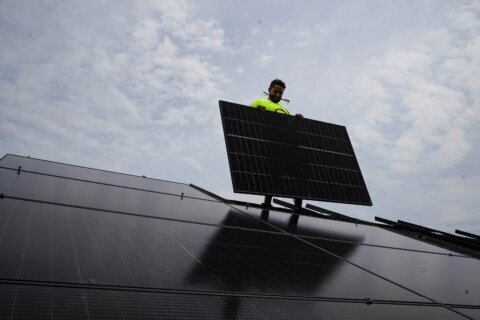The fifth generation of wireless transmission technology, known as 5G, is one of the more interesting developments on the technology landscape because of its wide-ranging implications.
It’s not just going to be a faster wireless technology; it’s likely to empower new uses of technology that most people aren’t even aware of today.
How fast is 5G?
A typical example that’s being used to demonstrate the potential uses is that a full-length, high-definition movie can be downloaded in seconds rather than minutes.
While 5G is designed to be at least four to five times faster than 4G, there’s much more to the technology than just speed.
Lower latency — which will make it more responsive — along with greater capacity will allow more devices to connect to the same cell, which typically chokes down speeds on 4G cell sites.
With more people installing smart devices in their homes along, with the explosion of Internet of Things devices, smart cities and driverless cars, this additional capacity will allow this huge new load of connected devices to be manageable.
Expect everything that you access via your smartphone to become more instantaneous as this technology rolls out.
When will we see 5G?
The original timeline set for the 5G standard was 2020, but various entities agreed to work on a set of intermediate standards so the technology could come to market in some form sooner.
AT&T is scheduled to roll out 5G late this year in markets including Atlanta, Dallas, Waco, Charlotte, Raleigh and Oklahoma City.
Verizon is targeting Houston, Los Angeles, Sacramento and Indianapolis for its initial rollout this year.
Will my phone work on 5G?
In order to take advantage of the faster speeds, you’ll need to use devices that have 5G capabilities built in, which currently don’t exist.
Both AT&T and Verizon plan to offer a small “puck” that’ll essentially be a 5G hotspot when they initially roll out the service, because there are no 5G smartphones available just yet.
We should see the first wave of 5G handsets available from companies such as Motorola and LG early next year, with all of them running the Android operating system.
Apple is notorious for waiting to implement newer technologies in the iPhone, and given the significant additional costs this would add to an already-expensive device, don’t expect a 5G-capable iPhone in the near future.
Apple is also likely to hold off because none of the mobile networks will have 5G available across their entire system until at least 2020 — longer for true nationwide coverage for most.
Beware of faux 5G
Until the devices and network rollout hit their stride in 2020, be careful not to allow marketing jargon to confuse you in your buying decisions.
For instance, AT&T has launched something they call 5G Evolution, which is an enhanced 4G that will work in conjunction with true 5G down the road, but isn’t 5G.
Motorola and Verizon announced the Moto Z3, “the first 5G smartphone,” this month, but the actual phone can only connect to 3G and 4G networks until they release a 5G add-on module that users will have to buy next year to make it truly 5G.
Ken Colburn is founder and CEO of Data Doctors Computer Services. Ask any tech question on Facebook or Twitter.







